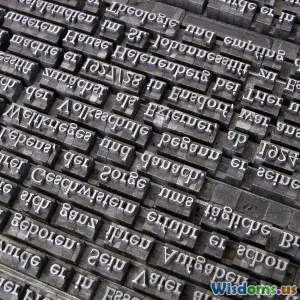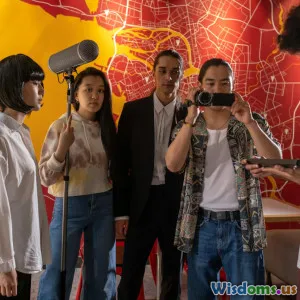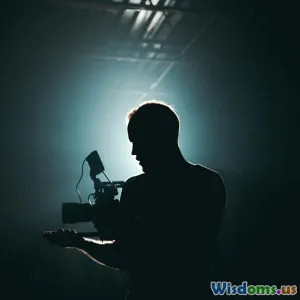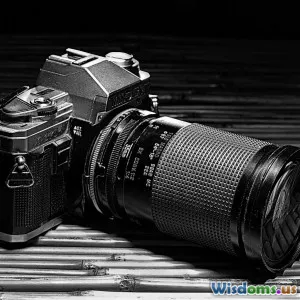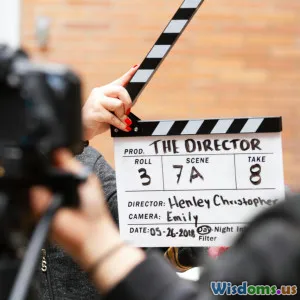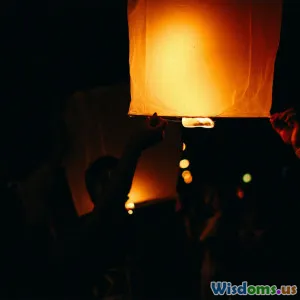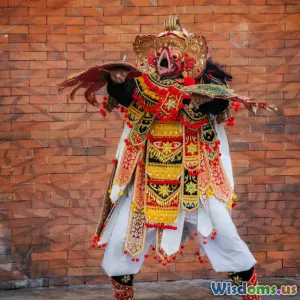
Ten Inspiring Costume Designs That Changed Cinematic History
10 min read Explore ten iconic costume designs that transformed film and defined cinematic style for generations. (0 Reviews)
Ten Inspiring Costume Designs That Changed Cinematic History
Costumes are more than just fabric and design in movies—they are vital storytelling tools that bring characters to life, shape moods, and anchor entire narratives. Over the past century, certain costume designs have transcended their screen time to influence fashion, culture, and filmmaking techniques. Imagine Colonel Sanders’ white suit or Darth Vader’s helmet: a single look becomes an icon.
In this article, we journey through ten inspiring costume designs that not only enhanced their films but redefined cinema’s visual language. Each example reveals a unique blend of creativity, historical context, and technical mastery that lifted movies into the realm of legend.
1. The White Dress from "The Seven Year Itch" (1955)
Designed by William Travilla, Marilyn Monroe’s shimmering white halter dress from the subway grate scene is a cinematic hallmark. Travilla studied architecture and art, bringing a sculptural approach to the garment. The dress’s pleated skirt billowing in the breeze became an emblem of 1950s Hollywood glamour and Monroe's enduring sex appeal.
This design’s cultural resonance is immense: it’s been referenced and parodied endlessly, underscoring how costume shapes collective pop imagery. The dress is also a study in simplicity. It captures Monroe’s character’s bombshell persona without excess, perfectly complementing the film’s playful tone.
2. Dorothy’s Ruby Slippers from "The Wizard of Oz" (1939)
Conceived by legendary designer Adrian, the ruby slippers embody fantasy and hope. Their scintillating red contrasted against the black-and-white Kansas scenes and later the colorful Land of Oz created a striking visual metaphor.
Notably, MGM’s production demanded oversets of these slippers, some with sequins, others painted leather, adapted for dance and photographic techniques of the era. This costume isn’t merely a prop but a pivot of the story, symbolizing home and self-discovery.
Their importance lasted beyond cinema as original pairs became invaluable memorabilia, fetching record-breaking auction prices—demonstrating how costume designs serve as cultural treasures.
3. Darth Vader’s Armor in "Star Wars" (1977)
John Mollo’s design for Darth Vader forged a visually arresting villain that combined futuristic science fiction with Gothic darkness. Inspired partly by samurai armor, Nazi military uniforms, and bikers’ leather outfits, it evokes menace and mystery.
The easily recognized helmet and black body suit conceals the actor’s face, enhancing Vader’s intimidating presence. This design influenced countless subsequent sci-fi films and is often cited in studies of how costumes elevate character mythology.
Director George Lucas acknowledged, "The costume helped create the character’s aura and made him larger than life."
4. The Phryne Fisher Wardrobe from "Miss Fisher's Murder Mysteries" (2012–2015)
Costume Designer Tess Schofield’s work on this Australian period detective drama recreated the roaring 1920s with authenticity and flair. Phryne Fisher’s wardrobe—vintage, bold, and flamboyant—mirrors her independent, progressive personality.
Each costume piece was carefully researched, emphasizing embroidery, beadwork, and period-appropriate fabrics, using local artisans to replicate fine details. This revived interest in 1920s fashion among modern audiences, showcasing how costume can reawaken historical eras.
5. Cleopatra’s Attire in "Cleopatra" (1963)
Renowned designer Renie constructed extravagant costumes for Elizabeth Taylor’s portrayal of Cleopatra, blending rich Egyptian symbolism with Hollywood opulence. Over 65 costume changes featured luxurious fabrics, intricate beading, and jewel-encrusted accents.
These designs were not only historical interpretations but bold visual spectacles supporting the film’s dramatic scope. The costumes amplified the narrative of power, seduction, and decadence, essential for this epic.
Taylor declared, “The costumes were working characters themselves.” The designs influenced fashion collections in the 1960s and continue to inform cinematic portrayals of ancient royalty.
6. The Black Suit in "Men in Black" (1997)
Costume Designer Eyde Belasco’s minimalist black suits for agents J and K became iconic symbols in sci-fi cinema. The tailored, laundry-slick look projected professionalism infused with mystery.
Its impact lies in sparking a genre-wide sartorial blueprint for covert agents battling extraterrestrial threats. The uniformity also allows the costume to turn agents into nearly interchangeable forces, adding to the secretive agency’s lore.
In interviews, actor Will Smith mentioned how wearing the suit “makes you feel part of something bigger.” Simplicity paired with slick tailoring created an enduring and adaptable cinematic look.
7. Harry Potter’s School Robes in the "Harry Potter" Series (2001–2011)
Designed by Judianna Makovsky (first film) and later by other designers, the Hogwarts robes balance fantasy with reality, grounding the magical world in visually consistent and functional attire.
Each house’s colors and distinct emblematic badges help craft characters’ loyalties and identities, subtly reinforcing story arcs. The robes’ design underscores themes of tradition and coming-of-age.
The costumes’ success lies in their approachability—fans worldwide replicated these robes for cosplay, influencing youth culture profoundly.
8. The Red Dress in "Memoirs of a Geisha" (2005)
Costume designer Colleen Atwood recreated the traditional Japanese kimono with painstaking attention to fabric, color symbolism, and historical accuracy. The red dress Jing-cloth worn by the character Sayuri symbolized passion and transformation.
Atwood’s research included studying geisha culture, meticulously sourcing silks and embroidery techniques. The costumes enriched narrative subtleties by visually narrating cultural context and character development.
Harper's Bazaar noted, “Atwood’s costumes strike a balance between spirit and spectacle, transporting viewers into another world.”
9. The Mad Max Leather Ensemble in "Mad Max: Fury Road" (2015)
Jacqueline West and Margaret Sixel, co-costume designers, reinvented post-apocalyptic attire with unconventional materials and theatrical practicality in mind. The leather suits, gas masks, and spiked armor evoke survivalism and stark brutality in a dystopian world.
Tailored to allow stunt agility yet maintain gritty realism, these costumes helped define the gritty aesthetic of modern action cinema. Designers integrated recycled and distressed materials to amplify the film’s environmental themes.
Such innovative costume work has inspired not only film but also periodicals in fashion forecasting futuristic trends.
10. The Grease Pink Ladies Leather Jackets (1978)
Costume designer Albert Wolsky re-created 1950s Americana with a modern twist in "Grease." The Pink Ladies’ matching leather jackets became symbols of teenage rebellion and style.
Their cohesive outfits helped build character group identities and evoke nostalgia for the era. The look became popular in real youth culture, showcasing how films can influence fashion outside the screen.
The jackets represent a collective spirit in costume design—melding functionality, symbolism, and mass appeal.
Conclusion
From Hollywood glamour to dystopian futures, these ten costume designs have left indelible marks on cinematic history. They illustrate how costume design melds craft, culture, and creativity to define characters, deepen stories, and shape audience perceptions.
Iconic costumes become more than fabric—they turn into cultural icons, inspire fashion generations, and transform cinema into a powerful storytelling medium beyond words and images.
For aspiring filmmakers, designers, or cinephiles, these masterpieces are case studies in how deliberate costuming can change the face of cinema forever. The next great costume might well be the beginning of the next cinematic legend.
References:
- Bingham, Dennis. Dress Codes: Hollywood Costume Design. Bloomsbury Publishing, 2013.
- Mollo, John. Costume Design in Star Wars. Chronicle Books, 1997.
- Hollywood Costume Exhibitions, LACMA, 2012.
- Interviews featured in The Costume Designers Guild Magazine.
Images and examples credited to MGM, Lucasfilm Ltd., Warner Bros., and production designers.
Rate the Post
User Reviews
Popular Posts











